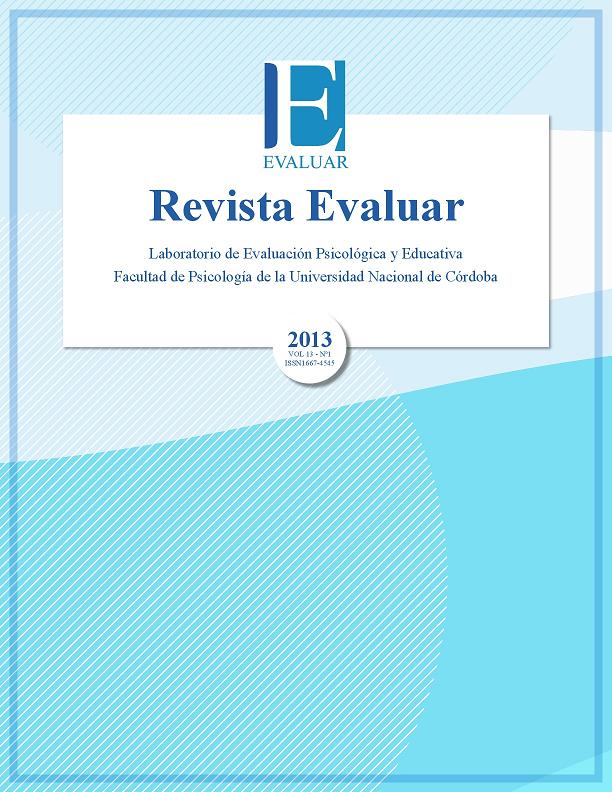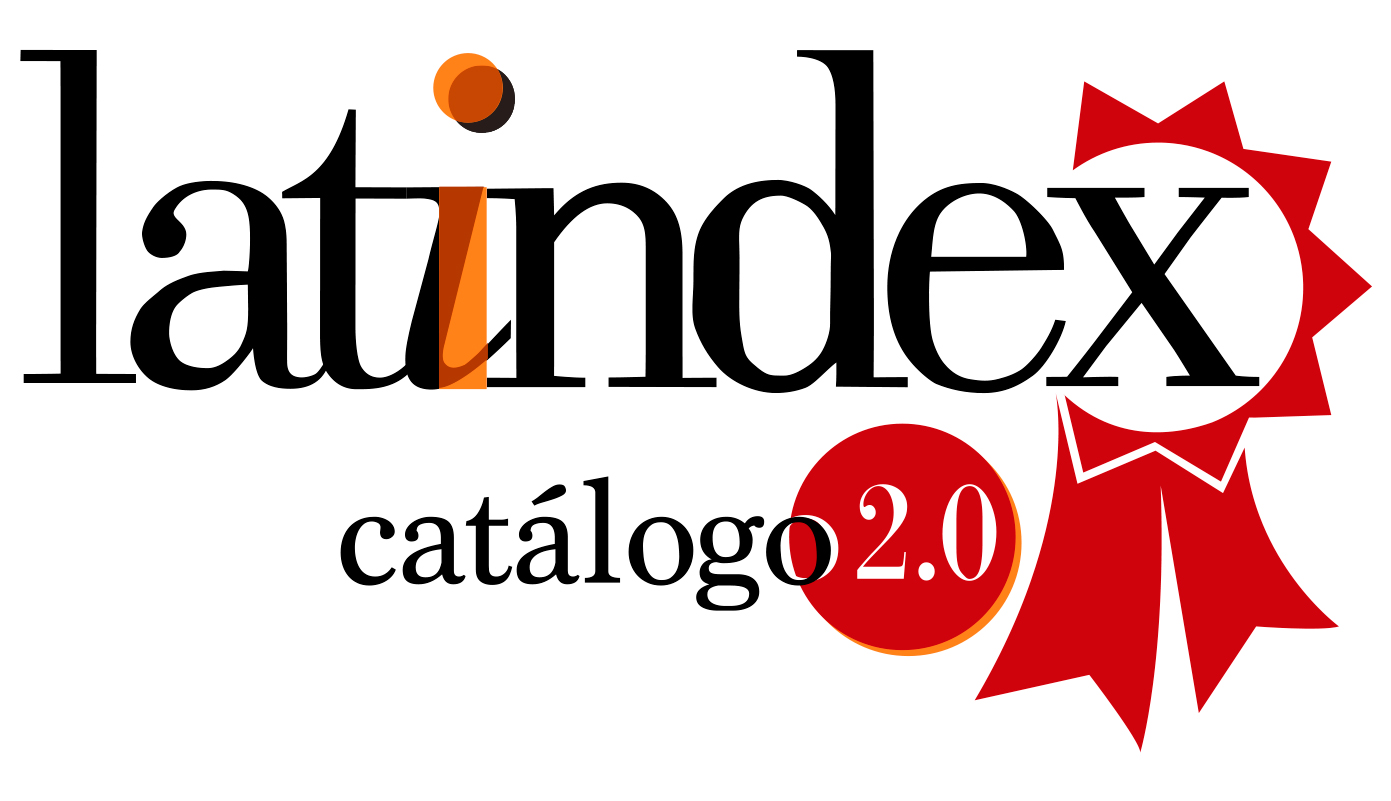Analysis of the validity and reliability of a scale for assessment of operational decision-making styles
DOI:
https://doi.org/10.35670/1667-4545.v13.n1.6795Keywords:
validación, toma de decisiones, misiones de pazAbstract
Within the framework of an experimental investigation with the objective to analyze the influence of the autobiographical memory and cultural intelligence on the type of decision making (analytical or intuitive) in contexts characterized by the cultural diversity and the uncertainty, we adapted the Survey of Tacit Knowledge (Daake, Dawley & Anthony, 2004) result to a Scale of Operative Decision Styles(SODS) in order to measure the predominant style in the decision making. This instrument was administered to a probabilistic sample of 272 volunteers assigned to peace missions. The objective of the present work is to validate this scale and to determine its confidence. The statistical analyses were made with the SPSS 15.0 software.The instrument presents acceptable psychometric properties, displaying all items elevated factorial saturations in all the five released components. The alpha of Cronbach shows a passable internal consistency.
Downloads
References
Aczel, B., Lukacs, B., Komlos, J.,& Aitken, M. R. F. (2011). Unconscious intuition or conscious analysis? Critical questions for the Deliberation-Without-Attention paradigm. Judgment and Decision Making, 6(4), 351-358.
Aiken, L. R. (2002). Psychological testing and assessment.New York: Allyn & Bacon.
Antonietti, A., Fabio, R.A., Boari, G., & Bonanomi, A. (2005). The questionnaire “Style of Learning and Thinking” (SOLAT): Psychometric data, validation, and standardization of the Italian version. TPM Testing-Psicometria-Metodologia, 12, 299-316.
Atay, S. (2012). The Standardization of Myers-Briggs Type Indicator into Turkish: An Application on Students. Journal of Instructional Psychology, 39(2), 74-79.
Azzollini, S. C.,Depaula, P. D., Piñeyro, D. R., & Torres, J. A. (2012). Incidencia del estilo decisorio predominante y el grado de incertidumbre cultural en la efectividad de las decisiones tomadas por militares voluntarios en misiones de paz. Revista Argentina de Ciencias del Comportamiento, 4(3), 13-21.
Azzollini, S., Torres, A., Depaula, P., Clotet, C., & Nistal, M. (2010a). La tensión entre la adaptación y la extrañeza cultural:Los significados atribuidos por integrantes de misiones de paz a los hábitos y costumbres de los lugareños. VI Jornadas de Sociología de la UNLP,“Debates y perspectivas sobre Argentina y América Latina en el marco del Bicentenario. Reflexiones desde las Ciencias Sociales”. Departamento de Sociología de la Facultad de Humanidades y Ciencias de la Educación de la Universidad Nacional de La Plata (UNLP). (pp. 1-11). (ISBN 978-950-34-0693-9).
Azzollini, S., Torres, A., Depaula, P., Clotet, C., & Nistal, M. (2010b). Los significados atribuidos a las situaciones de incertidumbre por militares integrantes de una misión de paz en Haití. VI Jornadas de Etnografía y Métodos Cualitativos,organizadas por el Instituto de Desarrollo Económico y Social (IDES). Centro de Antropología Social (CAS). (pp. 1-9). (ISBN 978-987-23365-2-3).
Azzollini, S., Torres, J. A., & Depaula, P.(2010). Los procesos de toma de decisiones en los escenarios militares actuales. CongresoPanamericano de Psicología 2010, “Abordajes psicológicos ante los emergentes de la sociedad actual”. Departamento de Psicología de la Facultad de Artes y Ciencias de la Universidad Católica de Salta (UCASAL). (pp. 1-11). (ISBN 978-950-623-060-9).
Betsch, C. (2004). Preference for intuition and deliberation (PID): An inventorying for assessing affect-and cognition-based decisionmaking. Zeitschrift fürDifferentielle und Diagnostische Psychologie, 25, 179-197.
Betsch, C. (2007). Chronic preferences for intuition and deliberation in decision making. En: H. Plessner, C. Betsch, & T. Betsch (Eds.), Intuition in judgment and decision making (pp. 3-22). Mahwah: Lawrence Erlbaum.
Betsch, C., & Kunz, J. J. (2008). Individual Strategy Preferences and Decisional Fit. Journal of Behavioral Decision Making, 21(5), 532-555.
Boyd, J. R. (1987). A discourse on winning and losing [Briefing slides]. Maxwell Air Force Base, AL: Air University Library. (Document No. M-U 43947).
Briggs Myers, I., & Myers, P. B. (1980). Gifts differing. Palo Alto: Consulting Psychologists Press.
Bryant, D. J. (2006). Rethinking OODA: Toward a Modern Cognitive Framework of Command Decision Making. Military Psychology, 18(3), 183-206.
Coscarelli, W. C. (1983). Development of a decision making inventory to assess Johnson’s decision making styles. Measurement and Evaluation in Guidance, 16, 149-160.
Curseu, P. L. (2011). Need for cognition and active information search in small student groups. Learning and Individual Differences, 21, 415-418.
Curseu, P. L., Schruijer, G. L. (2012). Decision Styles and Rationality: An Analysis of the Predictive Validity of the General Decision-Making Style Inventory. Educational and Psychological, 72(6), 1053-1062.
Daake, D., Dawley, D. D., & Anthony, W. P. (2004). Formal Data Use in Strategic Planning: An Organizational Field Experiment. Journal of Management Issues, 16(2), 232-247.
Dane, E., & Pratt, M. G. (2007). Exploring intuition and its role in managerial decision-making. Academy of Management Review,32(1), 33-54.
Demir, Y., Denat, Y., Khorshid, L., & Eser, I. (2012). Cultural Validation of the “Use of Intuition by Nursing Students Scale -Turkish versión”. Journal of Transcultural Nursing, 23(4), 369-376.
Depaula, P., Torres, J. A., Piñeyro, D. R., Cosentino, A. C., Clotet, C. I., & Castillo, S. (2012). Desarrollo de un software para la evaluación de la toma de decisiones en contextos de incertidumbre cultural. Memorias IV Congreso Internacional de Investigación y Práctica Profesional en Psicología, XIX Jornadas de Investigación, VIII Encuentro de Investigadores en Psicología del MERCOSUR. Secretaría de Investigaciones de la Facultad de Psicología de la Universidad de Buenos Aires (UBA). Neuropsicología y Psicología Cognitiva. (p. 67).(ISSN 1667-6750).
Dijksterhuis, A., & Nordgren, L. F. (2006). A theory of unconscious thought. Perspectives on Psychological Science, 1,95-109.
Epstein, S. (1994). Integration of the cognitive and the psychodynamic unconscious. American Psychologist, 49, 709-724.
Epstein, S. (2007). Intuition from the perspective of cognitive-experiential self-theory. En: H. Plessner, C. Betsch, & T. Betsch (Eds.), Intuition in judgment and decision making (pp. 23-37). Mahwah: Lawrence Erlbaum.
Evans, J. S. B. T. (2008). Dual-processing accounts of reasoning, judgment, and social cognition. Annual Review of Psychology, 59, 255-278.
Gregory, R. J. (2007). Psychological testing: History, principles, and applications. Boston: Pearson Education.
Hardin, E. E. & Leong, F. T. L. (2004). Decision-Making Theories and Career Assessment: A Psychometric Evaluation of the Decision Making Inventory. Journal of Career Assessment, 12(1), 51-64.
Hatano, G., & Inagaki, K. (2000). Knowledge acquisition and use in higher-order cognition. En: K. Pawlik & M. R. Rosenzweig (Eds.), International handbook of psychology (p. 167-190). London: Sage.
Johnson, R. H. (1978). Individual styles of decision making: A theoretical model for counseling. Personnel and Guidance Journal, 56, 530-536.
Jung, C. (1964). Tipos psicológicos. Buenos Aires: Sudamericana.
Kahneman, D. (2003). A perspective on judgment and choice. Mapping bounded rationality. American Psychologist, 58, 697-720.
Klein, G. (1998). Sources of Power: How People Make Decisions. Cambridge, MA: MIT Press.
Klein, G. (2003). Intuition at work: Why developing your gut instincts will make you better at what you do. New York: Currency Doubleday.
Kolb, D. (1984). Experiential Learning: Experience as the Source of Learning and development. Englewood Cliffs, NJ: Prentice-Hall.
Mancini, J. C. M., Clotet, C. I., & Depaula, P. (2010). Las Naciones Unidas y su aporte a la paz mundial. Congreso Internacional “Profundizando la democracia como forma de vida. Desafíos de la democracia participativa y los aprendizajes ciudadanos en el Siglo XXI”. Facultad de Ciencia Política y Relaciones Internacionales de la Universidad Nacional de Rosario (UNR). (pp. 302-306). (ISBN 978-950-673-868-6).
Mintzberg, H. (1973). The nature of managerial work. New York: Harper & Row.
Nisbett, R. E.,Peng, K., Choi, I., & Norenzayan, A. (2001). Culture and systems of thought: Holistic vs. analytic cognition, Psychological Review, 108, 291-310.
Paparone, C. R., & G. Reed (2008). The Reflective Military Practioner: How Military Professionals Think in Action. Military Review, 88(2), 66-76.
Pritchard, J. (2009). Tools for supporting intuition. Coaching: An International Journal of Theory, Research and Practice, 2(1), 37-43.
Raffaldi, S., Iannello, P., Vittani, L., & Antonietti, A. (2012). Decision-Making Styles in the Workplace: Relationships Between Self-Report Questionnaires and a Contextualized Measure of the Analytical-Systematic Versus Global-Intuitive Approach. Sage Open, 2, 1-11.
Riding, R., & Rayner, S. (1998). Cognitive styles and learning strategies. London: Fulton.
Sadler-Smith, E., & Burke, L. A. (2009). Fostering Intuition in Management Education: Activities and Resources. Journal of Management Education, 33, 239-262.
Sadler-Smith, E., & Sparrow, P. R. (2008). Intuition in Organizational Decision Making. En G. P. Hodgkinson, & W. H. Starbuck (Eds.), The Oxford Handbook of Organizational Decision Making (pp. 305-324). New York: Oxford University Press.
Scott, S. G., & Bruce, R. A. (1995). Decision-making style: The development of a new measure. Educational and Psychological Measurement, 55, 818-831.
Scott, W. J., McCone, D. R., & Mastroianni, G. R. (2009). Armed Forces & Society, 35(3), 460-476.
Simon, H. (1947). Administrative Behavior. Nueva York: Macmillan.
Simon, H. (1982). The Sciencesof The Artificial.Cambridge, MA: MIT Press.Simon, H. (1987). Making Management Decisions: The Role of Intuition and Emotion. Academy of Management Executive, 1(1), 57-66.
Simon, H. A. (1955). A behavioral model of rational choice. The Quarterly Journal of Economics, 69, 99-118.
Smith, A. J. (2003). The development and psychometric testing of an instrument measuring the use of intuition by nursing students. Unpublished doctoral dissertation, University of San Diego, San Diego, CA.
Smith, A. J. (2006). Continued Psychometric Evaluation of an Intuition Instrument for Nursing Students. Journal of Holistic Nursing, 24(2), 82-89.
Smith, A. J., Thurkettle, M. A., & de la Cruz, F. A. (2004). Use of intuition by nursing students: Instrument development and testing. Journal of Advanced Nursing, 47(6), 614-622.
Torrance, E. P. (1987). Some evidence regarding development of cerebral lateralization. Perceptual and Motor Skills, 64, 261-262.
Weick, K. E. (1995). Sensemaking in Organizations. Thousand Oaks, CA: Sage.
Woods-Groves, S., & Hendrickson, J. M. (2012). The Role of Assessment in Informing Our Decision-Making Processes. Assessment for Effective Intervention, 38(1), 3-5.
Zimmerman, L. A., Mueller, S. T., & Marcon, J. L. (2011). Improving Soldier Threat Detection Skills in the Operational Environment. Interservice/Industry Training, Simulation, and Education Conference. Paper No. 11196 (pp. 1-12).
Downloads
Published
How to Cite
Issue
Section
License
Copyright (c) 2013 Susana Celeste Azzollini, Pablo Domingo Depaula

This work is licensed under a Creative Commons Attribution 4.0 International License.
Revista Evaluar aplica la Licencia Internacional de Atribuciones Comunes Creativas (Creative Commons Attribution License, CCAL). Bajo esta licencia, los autores retienen la propiedad de copyright de los artículos pero permiten que, sin que medie permiso de autor o editor, cualquier persona descargue y distribuya los artículos publicados en Evaluar. La única condición es que siempre y en todos los casos se cite a los autores y a la fuente original de publicación (i.e. Evaluar). El envío de artículos a Evaluar y la lectura de los mismos es totalmente gratuito.




_(3).jpg)



.jpg)



